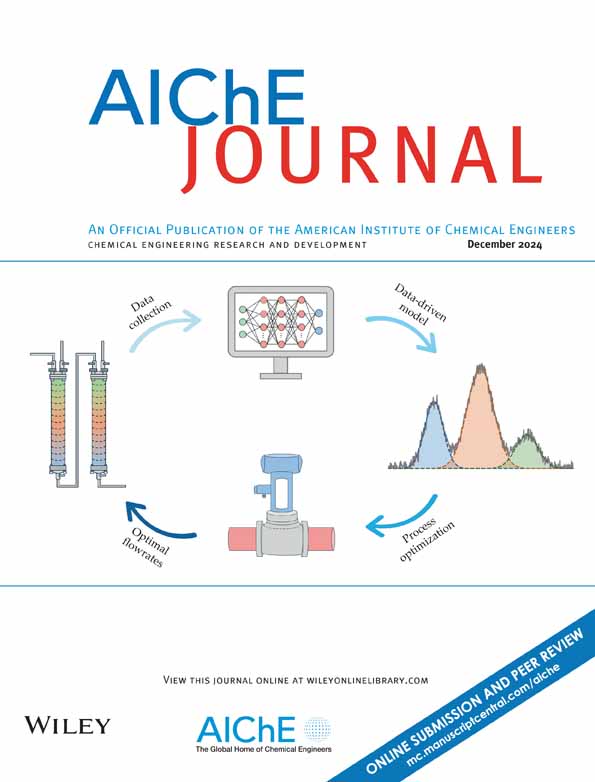通过终止界面的定向氢气溢出促进氢和化学品的零碳联合生产
IF 3.5
3区 工程技术
Q2 ENGINEERING, CHEMICAL
引用次数: 0
摘要
生物质醇的无受体脱氢为绿色H2和高价值化学品的联产提供了一条有吸引力的途径。然而,缓慢的H结合步骤严重抑制了反应平衡,导致C-C裂解。本文提出了一种独特的定向H溢出策略,通过构建Au- o - cu - o - mg /Al界面结构来控制电子传递方向,使H从O-H脱氢Cu2+位点转移到C-H脱氢Au位点,促进H2的形成。每个Cu被Mg/Al精确终止的结构继承自有序分散原子排列的层状双氧水。综合研究证实,不可还原的Mg2+/Al3+阻止了电子向载体的转移,而Au- o - cu电子相互作用则驱动H从载体向Au的溢出。Au/CuMgAl催化剂表现出前所未有的高甘油脱氢活性,其转换频率(1.18 × 104 h−1)是其他生物质生成H2体系的3-10倍,共产乳酸的选择性高达98.8%。本文章由计算机程序翻译,如有差异,请以英文原文为准。
Carbon-zero co-production of hydrogen and chemicals boosted by directional hydrogen spillover via terminated interface
Acceptorless dehydrogenation of biomass-alcohol provides an appealing route for co-producing green H2 and high-value chemicals. However, the sluggish H species binding step severely inhibits reaction equilibrium and cause C-C cleavage. Herein, we propose a unique directional H spillover strategy driven by controlling electron transport direction via constructing Au-O-Cu-O-Mg/Al interfacial structure, to allow H species transfer from O-H dehydrogenation Cu2+ site to C-H dehydrogenation Au site to promote H2 formation. The structure that each Cu precisely terminated by Mg/Al is inherited from layered double hydroxides with orderly dispersed atom arrangement. Comprehensive studies substantiate that the unreducible Mg2+/Al3+ blocks electron transfer toward support, whereas Au-O-Cu electronic interaction drives H spillover from the support to Au. The Au/CuMgAl catalyst demonstrated unprecedentedly high glycerol dehydrogenation activity, showing 3–10 times turnover frequency (1.18 × 104 h−1) than other biomass-derived H2 formation system, co-producing lactic acid with selectivity up to 98.8%.
求助全文
通过发布文献求助,成功后即可免费获取论文全文。
去求助
来源期刊

AIChE Journal
工程技术-工程:化工
CiteScore
7.10
自引率
10.80%
发文量
411
审稿时长
3.6 months
期刊介绍:
The AIChE Journal is the premier research monthly in chemical engineering and related fields. This peer-reviewed and broad-based journal reports on the most important and latest technological advances in core areas of chemical engineering as well as in other relevant engineering disciplines. To keep abreast with the progressive outlook of the profession, the Journal has been expanding the scope of its editorial contents to include such fast developing areas as biotechnology, electrochemical engineering, and environmental engineering.
The AIChE Journal is indeed the global communications vehicle for the world-renowned researchers to exchange top-notch research findings with one another. Subscribing to the AIChE Journal is like having immediate access to nine topical journals in the field.
Articles are categorized according to the following topical areas:
Biomolecular Engineering, Bioengineering, Biochemicals, Biofuels, and Food
Inorganic Materials: Synthesis and Processing
Particle Technology and Fluidization
Process Systems Engineering
Reaction Engineering, Kinetics and Catalysis
Separations: Materials, Devices and Processes
Soft Materials: Synthesis, Processing and Products
Thermodynamics and Molecular-Scale Phenomena
Transport Phenomena and Fluid Mechanics.
 求助内容:
求助内容: 应助结果提醒方式:
应助结果提醒方式:


